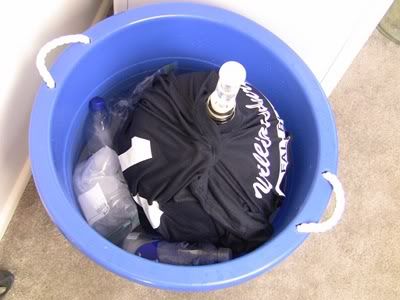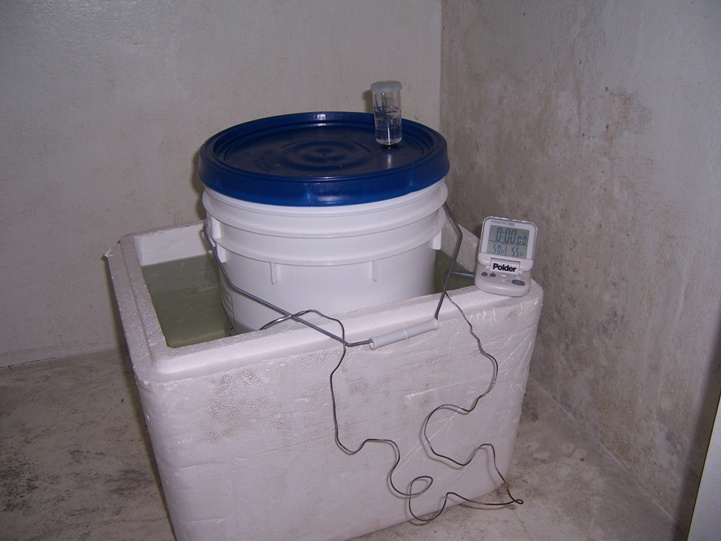Rhinosaur88
New Member
- Joined
- Aug 18, 2013
- Messages
- 2
- Reaction score
- 0
Hi everyone,
I'm very new to brewing, and this is my first post on this awesome site. I have just finished brewing my first pale ale from scratch which was so much fun! It is currently halfway through day 3 of the fermentation process. Everything so far has, I think, gone according to plan. However there are a couple of things I'm slightly concerned about;
I pitched the yeast (Nottingham Danstar) at 22C which from what I've read online is an ideal temperature. After about 24-36 hours the airlock was bubbling like crazy which I took to be a good thing. I've had a consistent temperature of 22-24C in my kitchen. Last night however my flat mates and I had a few people over for dinner and the kitchen got pretty hot. I noticed that the temperature had risen to 26C. Naturally, I was terrified for my beer and hastily shooed everyone out of the kitchen. After a while the temperature dropped back to 24C and it is now currently sitting at 22C.
I've been going through various threads and a lot of people have been saying that 26C is too hot for an ale. Does anyone have any insight as to whether or not my beer will now taste like crap? I'm hoping that since it only peaked for an hour or so it should be OK but still...
I'm also now concerned that the bubbles are few and far between considering they were going mental about 16 hours ago. Is this is a good thing? My plan was to leave the beer in the primary fermentation bucket for 10 days before switching it to the secondary for 4 days in order to get some dry hopping in.
Any help and insight would be greatly appreciated!
I'm very new to brewing, and this is my first post on this awesome site. I have just finished brewing my first pale ale from scratch which was so much fun! It is currently halfway through day 3 of the fermentation process. Everything so far has, I think, gone according to plan. However there are a couple of things I'm slightly concerned about;
I pitched the yeast (Nottingham Danstar) at 22C which from what I've read online is an ideal temperature. After about 24-36 hours the airlock was bubbling like crazy which I took to be a good thing. I've had a consistent temperature of 22-24C in my kitchen. Last night however my flat mates and I had a few people over for dinner and the kitchen got pretty hot. I noticed that the temperature had risen to 26C. Naturally, I was terrified for my beer and hastily shooed everyone out of the kitchen. After a while the temperature dropped back to 24C and it is now currently sitting at 22C.
I've been going through various threads and a lot of people have been saying that 26C is too hot for an ale. Does anyone have any insight as to whether or not my beer will now taste like crap? I'm hoping that since it only peaked for an hour or so it should be OK but still...
I'm also now concerned that the bubbles are few and far between considering they were going mental about 16 hours ago. Is this is a good thing? My plan was to leave the beer in the primary fermentation bucket for 10 days before switching it to the secondary for 4 days in order to get some dry hopping in.
Any help and insight would be greatly appreciated!






